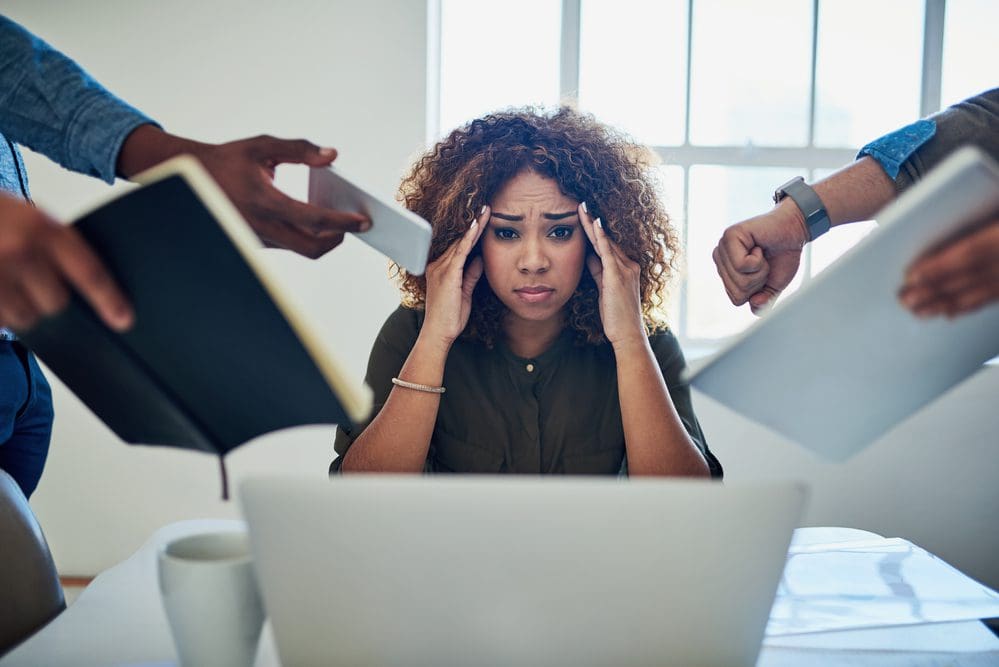Full Disclosure: Clicking on these links could mean a tiny commission for me, at no extra cost to you.
In today’s fast-paced and demanding work environments, workplace burnout has become an all-too-common phenomenon. The World Health Organization (WHO) recognizes burnout as an “occupational phenomenon,” defining it as a syndrome resulting from chronic workplace stress that has not been successfully managed. Burnout is characterised by three main dimensions: feelings of energy depletion or exhaustion, increased mental distance from one’s job, or feelings of negativism or cynicism related to one’s job, and reduced professional efficacy. This blog post will delve into the causes and implications of workplace burnout, explore how individuals can return to work after experiencing burnout, and highlight the role of private rehabilitation in the recovery process.
Identifying Job Burnout Symptoms
The first step to navigating burnout at work is to identify if you’re experiencing any of the symptoms. Consider asking yourself the following questions:
- Do you find yourself questioning the significance of your work?
- Is it a struggle to go to work and start your day?
- Do you feel disconnected from your tasks and your colleagues?
- Have you become impatient with co-workers, customers, or clients?
- Are you often too tired to perform your job effectively?
- Do you find it difficult to concentrate on your tasks?
- Do you derive little satisfaction from your accomplishments at work?
- Do you feel disillusioned by your job?
- Are you doubting your capabilities and skills?
- Have you turned to food, drugs, or alcohol to soothe or numb your feelings?
- Have there been changes in your sleeping patterns?
- Are you experiencing headaches, stomach or bowel issues, or other physical symptoms without an apparent medical reason?
If you answered “yes” to any of these questions, you might be dealing with job burnout. It’s important to consider discussing these feelings with a healthcare or mental health professional, as these symptoms could also be related to other health conditions, such as depression.
Causes of Workplace Burnout
Burnout does not happen overnight; it is a gradual process that builds up over time. Several factors contribute to workplace burnout, including:
- Excessive Workload: When the demands of the job exceed the worker’s capacity to meet them, stress levels rise. Consistently working long hours without adequate rest can lead to physical and mental exhaustion.
- Lack of Control: Employees who feel they have no control over their work tasks, schedule, or environment are more likely to experience burnout. This lack of autonomy can make workers feel powerless and frustrated.
- Insufficient Rewards: When hard work and dedication are not adequately recognised or rewarded, employees may feel undervalued and unmotivated. This can lead to a sense of futility and cynicism towards the job.
- Poor Workplace Relationships: A toxic work environment characterised by bullying, lack of support, or interpersonal conflict can significantly contribute to burnout. Positive relationships with colleagues and supervisors are crucial for a healthy work environment.
- Unclear Job Expectations: Uncertainty about job roles, expectations, or performance criteria can create stress and anxiety. Clear communication and defined roles are essential to prevent burnout.
- Work-Life Imbalance: When work demands encroach on personal time, employees struggle to balance their professional and personal lives. This imbalance can lead to chronic stress and burnout.
Mental and Physical Implications of Workplace Burnout
The effects of workplace burnout extend beyond the office, impacting both mental and physical health. The implications can be severe and long-lasting if not addressed promptly.
Impact on Mental Health
- Chronic Stress: Burnout leads to prolonged exposure to stress, which can affect mental health, leading to anxiety, depression, and mood swings.
- Cognitive Impairment: Chronic stress and fatigue can impair cognitive functions such as memory, concentration, and decision-making skills. This can further reduce work performance and increase frustration.
- Emotional Exhaustion: Burnout causes a profound sense of emotional depletion, leading to feelings of helplessness, hopelessness, and detachment. Individuals may feel disconnected from their work and colleagues.
- Decreased Motivation and Productivity: As burnout progresses, motivation and engagement in work tasks decline. This can result in decreased productivity and a higher likelihood of errors.
Impact on Physical Health:
- Sleep Disorders: Stress and anxiety from burnout can lead to insomnia or poor-quality sleep, further exacerbating fatigue and exhaustion.
- Weakened Immune System: Chronic stress can weaken the immune system, making individuals more susceptible to illnesses and infections.
- Cardiovascular Problems: Long-term stress is associated with an increased risk of cardiovascular diseases such as hypertension, heart attack, and stroke.
- Gastrointestinal Issues: Stress can also affect the digestive system, leading to problems such as irritable bowel syndrome (IBS), stomach ulcers, and appetite changes.
Returning to Work After Burnout
Recovering from workplace burnout and returning to work is a delicate process that requires time, effort, and a supportive environment. Here are some strategies to facilitate a successful return to work after burnout:
- Take Adequate Time Off: Before returning to work, it is crucial to take sufficient time off to rest and recover. This period allows individuals to recharge and regain their physical and mental strength.
- Seek Professional Help: Consulting with a mental health professional can provide valuable support and guidance. Therapy can help individuals develop coping strategies, address underlying issues, and manage stress more effectively.
- Gradual Return: A phased return to work can help ease the transition. Starting with reduced hours or a lighter workload allows individuals to adjust gradually without feeling overwhelmed.
- Set Boundaries: Establishing clear boundaries between work and personal life is essential to prevent future burnout. This includes setting limits on working hours, taking regular breaks, and prioritising self-care.
- Improve Time Management: Effective time management skills can help individuals manage their workload more efficiently. Prioritising tasks, delegating when possible, and avoiding multitasking can reduce stress and increase productivity.
- Enhance Workplace Support: A supportive work environment is crucial for a successful return. Employers can facilitate this by offering flexible working arrangements, providing access to mental health resources, and fostering a culture of open communication.
- Create Positive Relationships: Building and maintaining positive relationships with colleagues and supervisors can create a supportive network. This can help individuals feel valued and connected, reducing feelings of isolation.
The Role of Private Rehab in Treating Workplace Burnout
Private rehabilitation centres offer specialized programs designed to address the unique needs of individuals experiencing burnout. These facilities provide a comprehensive and holistic approach to recovery, encompassing physical, mental, and emotional well-being.
- Personalised Treatment Plans: Private rehab centres develop individualised treatment plans tailored to each person’s specific needs. This personalised approach ensures that all aspects of the individual’s health are addressed.
- Therapeutic Interventions: Rehab programs often include a variety of therapeutic interventions, such as cognitive-behavioural therapy (CBT), mindfulness-based stress reduction (MBSR), and other evidence-based therapies. These therapies help individuals develop coping mechanisms, manage stress, and improve mental health.
- Holistic Therapies: In addition to traditional therapies, private rehab centres may offer holistic treatments such as yoga, meditation, acupuncture, and nutritional counselling. These therapies aim to restore balance and promote overall well-being.
- Supportive Environment: A key benefit of private rehab is the supportive and nurturing environment. Being surrounded by professionals and peers who understand and share similar experiences can provide a sense of community and encouragement.
- Focus on Self-Care: Rehab programs emphasise the importance of self-care and teach individuals how to incorporate self-care practices into their daily lives. This focus on self-care helps prevent future burnout and promotes long-term health.
- Aftercare and Follow-Up: Recovery from burnout does not end when the rehab program is complete. Private rehab centres often provide aftercare services and follow-up support to ensure individuals continue to progress and maintain their health after returning to work.
Workplace burnout is a serious issue that can have serious implications on an individual’s mental and physical health. Understanding the causes and recognizing the signs of burnout are crucial steps in addressing and preventing it. Returning to work after experiencing burnout requires a thoughtful and supportive approach, with a focus on self-care, time management, and positive workplace relationships. Private rehabilitation centres offer valuable resources and programs designed to help individuals recover from workplace burnout and develop strategies to maintain their well-being. By prioritizing mental and physical health, individuals can navigate the challenges of the modern workplace and achieve a more balanced and fulfilling professional life.








